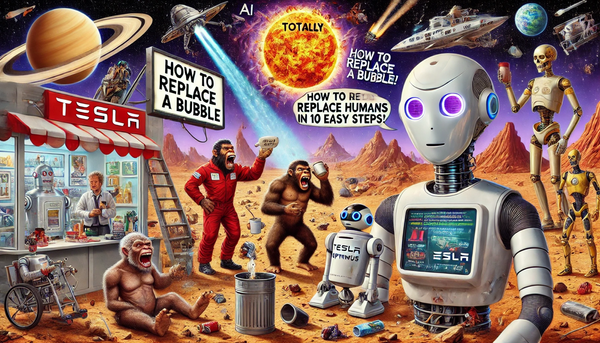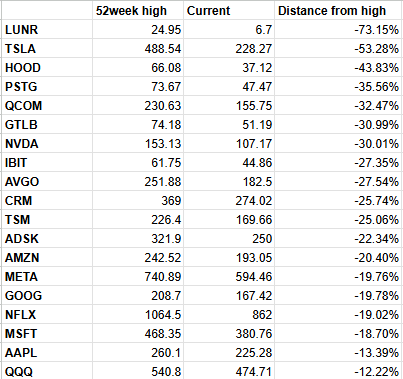Trade Alert – Preview of my upcoming “Ten Potential 10-Baggers” book
I’m working on a new investment book called “Ten Potential 10-Baggers” and we should be publishing it next week. In it, I drill down on three disparate extremely high growth sectors of our economy and detailing their financials, their fundamentals and their long-term prospects, giving each a Revolution Investment Rating from 1-10 with 10 being the best investment in history. Today, I’ll share three of the stocks I’ve picked from the first high growth sector on the list, 3-D Printing and give you some of the notes I’ve been making on each of them.
We’re talking about an industry that is likely to grow from about $2 billion in total sales this year to about $20 billion by the turn of the decade. And that means each and every one of these three stocks could go up 10-fold over that time period too, although I would expect that only one of the three will truly end up dominant in the industry. Unless of course, GE, Amazon, Hewlett-Packard, Applied Materials or some other big company takes these guys out first, which would mean we’d probably be selling our stock to one of those companies in an acquisition at some point — hopefully for more than they’re trading at today.
I’m personally opening a new stock account in which I’ll be putting a small investment in each of the ten companies listed in my new book. In other words, I’m going to buy a basket of the “Ten Potential 10-Baggers” book. I am going to buy a small amount of each of these three stocks starting tomorrow and then will add the others into that portfolio after I publish the full book and you guys get a chance to trade the stocks too before I do next week. Then I plan on throwing away the login info (not literally of course) and never looking at that account for the next ten years. If just one or two of the ten stocks in the list go up 10-fold, or if even more do, we’ll obviously have made some great money in that new portfolio.
* ExOne – XONE’s products are high-end and that of course means expensive. XONE’s printers range in cost from $100,000 to $1.5 million, and the average selling price has been climbing well above the $1 million threshold. And that means that for now, most of ExOne’s clients come from industries that require more durable printed parts such as the automotive industry and aeronautics manufacturers. While most 3D printers work use plastics as their primary media, ExOne handles other metals, including (soon) titanium. ExOne’s ability to print with metals as their primary media gives manufacturers the ability to create precision parts out of materials like titanium without the waste of a normal manufacturing process. Their bigest customers include Tesla Motors, Boeing, and Caterpillar.
ExOne generated “only” about $33 million in revenue over the last 12 months and is not profitable. And it’s currently trading at more than 20x sales. That said, we’re looking at company that’s likely to increase that topline organically each year for the next several years at 50-100%. In five years from now, we could be looking at sales of $200 million or more.
XONE’s got an interesting consumer/small business angle to their business too, in the company’s production service center (PSC) business. XONE began opening PSCs in 2009. PSCs is a bit like a Kinko’s in that anybody can show show up with a 3D CAD, and the PSC prints the object for you. ExOne opened its first PSC in 2009 and currently has five PSCs. Of note though, PSC sales were DOWN sequentially in Q1.
Stratasys – SSYS, like XONE, has traditionally focused on the high-end industrial sector for sales of their 3-D printing technology. Unlike ExOne though, which is focused primarily on printer sales and PSC sales to drive profits, Stratasys forces printer owners to purchase the materials (usually plastic) used to create 3D renderings from Stratasys at enormous margins. In fact, Stratasys sells a kilogram of basic ABS plastic (that might cost a couple dollars to produce) for $250-300. The company is also revolutionizing anti-privacy in the industrial sector as it encloses the ABS plastic within packaging with an RFID chip that must be authenticated by the printing machine. Of course that keeps customers from using generic plastic and locks them into a recurring revenue stream model for Stratasys. It’s the old razor-blade model made famous by Gillette and Hewlett-Packard with printers and in cartridges.
Stratasys is a serial consolidator in the 3-D printing industry. And it recently became a leader in the low-end, cheaper, consumer-driven 3-D printing industry by acquiring privately-held MakerBot. Makerbot, along with 3-D Systems, is the dominant name and force in the consumer and hacker world of 3-D printing.
And perhaps most exciting, MIT and Stratasys recently succeeded in using 3-D printing to create bones and ears and other health-care revolutionizing products from synthetic biomaterials. Stratasys has become the dominant force and go-to name in the 3-D printing industry.
3-D Systems – DDD has the single best stock symbol in the market, although a cool name or symbole is never a reason to bet on a stock or a horse. The company’s been aggressively consolidating the industry by buying up any and every company that Stratasys doesn’t get to first, which has helped the company diversify from the low-end consumer market that it’s traditionally been known for. In fact, in just the last few weeks, the company has acquired two high growth 3-D printing competitors in on-demand manufacturing specialist Rapid Product Development Group followed up by Phenix Systems, which specializes in a laser-based 3-D printing technology that uses metal as its primary medium. The company now competes with both Stratasys and ExOne in their primary markets as noted above.
3-D Systems has recently been getting wider distribution for its product line as the product line expands and price points come down. Staples for example and Amazon and several huge IT hardware resellers have joined the parade.




